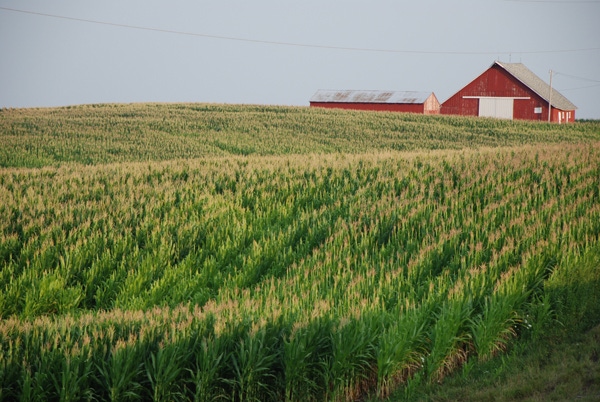August 13, 2018

The latest survey shows the majority of agricultural bankers expect farm income to decline next quarter, just as it did in this second quarter report. Quality farmland values also fell in the most recent survey, according to the latest Agricultural Finance Monitor published by the Federal Reserve Bank of St. Louis. There was a slight improvement in cash rents compared to a year ago.
The survey was conducted from June 15, 2018, through June 30, 2018, prior to the tariffs. The results presented here are based on the responses from 24 agricultural banks within the boundaries of the Eighth Federal Reserve District. The Eighth District includes all or parts of seven Midwest and Mid-South states: Arkansas, Illinois, Indiana, Kentucky, Mississippi, Missouri and Tennessee.
Year-over-year declines in farm income
Survey results show agricultural bankers continue to report year-over-year declines in farm income. The current index value marks the 18th consecutive quarter with a value below 100. Based on a diffusion index methodology with a base of 100 (results above 100 indicate proportionately more bankers report higher income compared with the same quarter a year ago; results lower than 100 indicate proportionately more bankers report lower income from a year earlier), the second-quarter index value for farm income was 58.
Some parts of the region see less volatility in farm income than others. “Farm income in our region is not as volatile as it is in row crop areas. We are mostly contract poultry and animal production. Independent cattle producers make up the balance of our agriculture production; those prices are off the highs but have stabilized,” stated one Arkansas lender. Another lender from Missouri said low-income producing properties are on the rise. “Demand for recreational/low-income- producing properties is increasing, as St. Louis MSA residents become more confident about their economy,” the lender said.
Quality farmland values also decline
Quality farmland values fell 3.5 percent in the second quarter but cash rents increased by 0.4 percent compared with a year ago. On the other hand, there was a 1.6 percent increase in ranchland or pastureland values relative to a year ago, while cash rents declined by 9 percent. The drop in cash rents for ranchland or pastureland was the largest percentage drop recorded since the fourth quarter of 2016.
Special questions regarding projections for farm income declines and impact on new tax law
The University of Missouri’s Food and Agricultural Policy Research Institute, projected in March a decline of about 6.5 percent in farm income for the year. A significant majority (79 percent of survey respondents) felt the projection was about right.
When asked about the impact the Tax Cuts and Jobs Act of 2017 would have on their borrowers, a significant number of respondents, 71 percent, indicated they expected the new law would have a somewhat positive or significantly positive impact, 25 percent felt the new law would have no effect on their borrowers, while only 4 percent felt the impact would be negative.
You May Also Like




